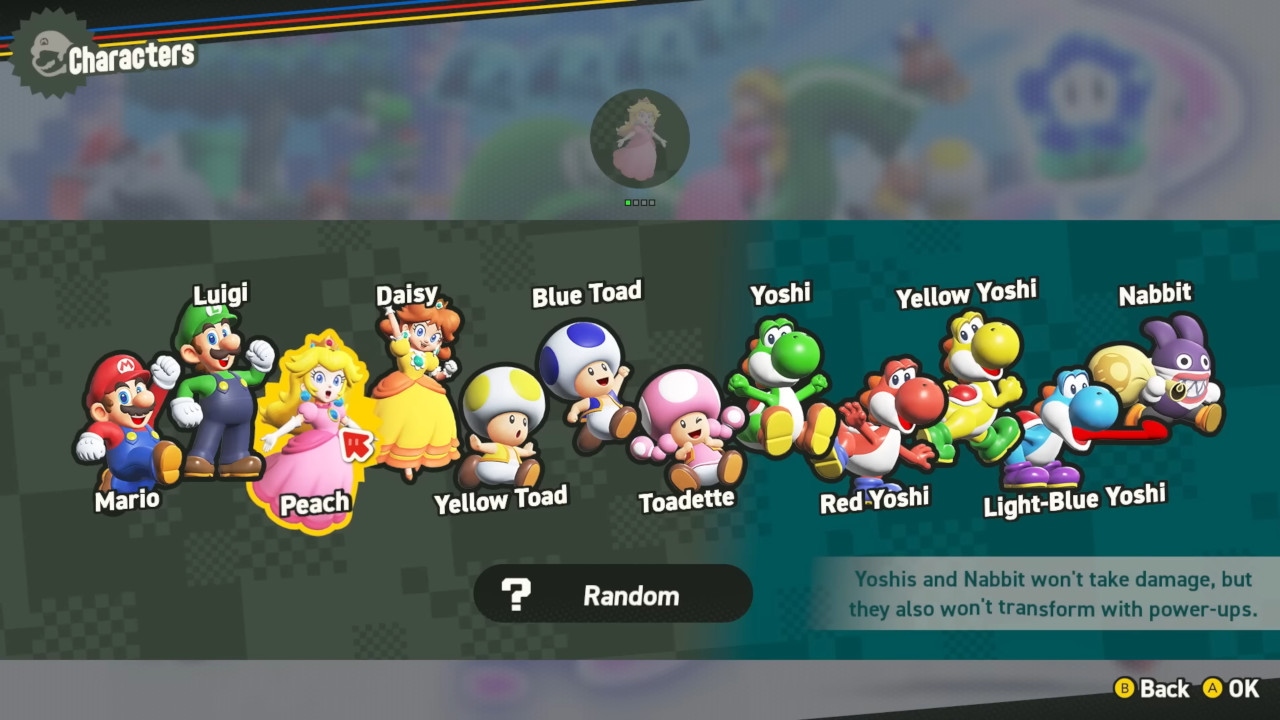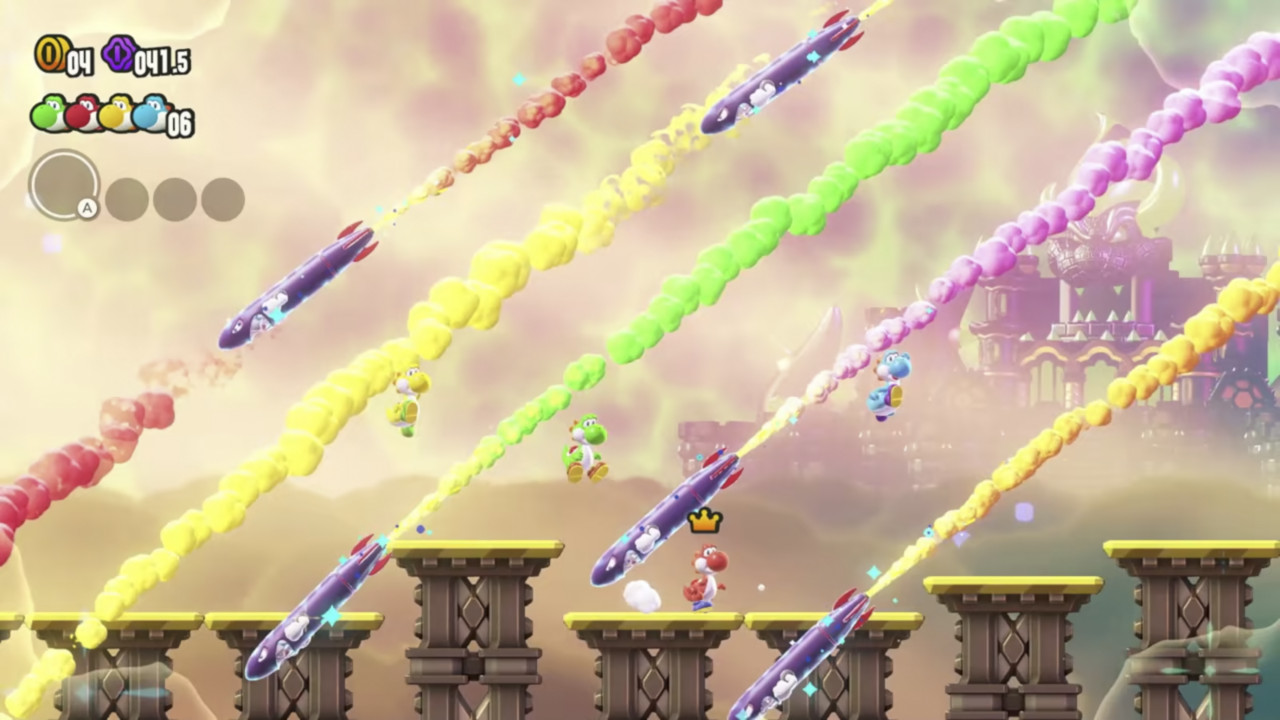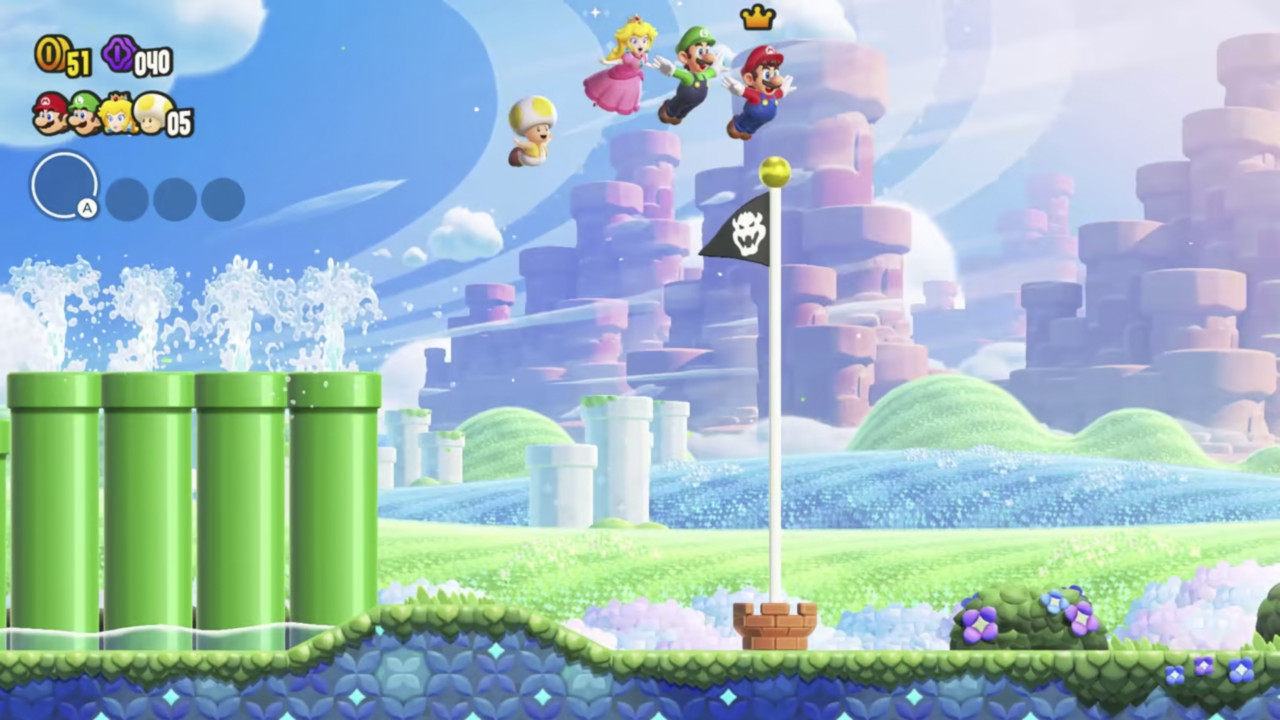Following nearly two decades of New Super Mario Bros., Nintendo has made an effort to redefine the famous plumber’s 2D titles. Wonder seeks to provide a new standard for future entries, with in-depth features and fantastical abilities one could only dream of until now. But fans have found plenty of reason to be bored with 2D Mario games up until now, with some questioning why a new one should be made after the existence of Mario Maker. Despite these concerns, Super Mario Bros. Wonder manages to live up to its name, standing up to even its most beloved predecessors as a worthy addition to the series.
Wonder-Filled Worlds and Characters

The content found in Wonder is fairly sizable, especially when compared to previous 2D Mario titles. There are around 80 main courses to explore when not counting the side courses. Though some levels could be argued to be more gimmicky than others, many of them still have plenty of secrets to find, with a couple of hidden exits and unseen coins rewarding vigilant players. It’s a joy to simply explore the game, and this fact is apparent no matter which character players choose.
There are 12 characters players can choose from in Wonder, with five of them being damage-less options for beginner players. The game isn’t particularly hard without these “easy” characters, but there are still some interesting challenges that they can face alongside the main cast. The fact that they can’t use power-ups makes it impossible to complete certain levels with them, but players are given this warning beforehand, allowing them to plan ahead and see if the trade-off is worth it.
On the subject of the main cast, Daisy makes her first appearance in a mainline title since Super Mario Land, providing some extra variety that wasn’t present in previous games. It would’ve been nice to see even more spinoff-only characters like the Wario duo, but Daisy alone is still a welcome addition after so long with just the core Mario cast. There’s not much variation in the gameplay of the plumbers, princesses, or Toads, leading players to get a more standardized experience no matter who they choose.
The new voices for these characters are also quite competent. Mario and Luigi are still best played by Charles Martinet, but their new actors manage to get a good handle on the brothers’ classic exclamations. This applies to pretty much every character outside of Nabbit, with his “noises” completely changing from previous entries to this one. For such a minor character, though, this isn’t as much of a surprise; what’s there is perfectly acceptable for long-time fans and newcomers alike.
While not playable, the talking flowers in Wonder are the only other major sources of voicework. Thankfully, they also never get worse than mildly annoying with their quippy dialogue. Some players will still want to disable their voices in the options, but most might simply be too enamored with the stages to mind.
Wondrous Areas and Encounters

The level design in Super Mario Bros. Wonder is phenomenal. As previously stated, it manages to reward exploration in a fantastic way, but it also encourages players to explore in the first place. This is thanks to a plethora of new enemies like platform-providing Blewbirds and Missile Megs, as well as new features such as water-like goop and spring-y trees. There are also badges that replace a player’s abilities or allow for increased movement, and while some of them are redundant or questionably helpful, they make for attractive ways to change how a player moves through each course.
The most influential new addition is the Wonder Flower, which changes each stage a player is on in numerous different ways. Sometimes the effects are as simple as enlarging an enemy or two. Other times, the entire level can shift and change, or players will take on entirely new forms. This is where the heart of the game lies, with many of these effects being just as surprising as they are fun. They also make up for Wonder’s disappointingly low number of power-ups and boss battles, arguably the only two areas where the game falls short.
Boss fights in Super Mario Bros. Wonder manage to provide a decent level of fun and challenge. However, in the context of this game, these battles have only a fraction of the creativity. Across eight bosses in total, there are only three unique designs, with one of them hardly even counting as a boss. The other two will only feel far too familiar to long-time Nintendo fans, lessening the impact of these climactic moments immensely. This problem is only made worse by the fact that two worlds don’t even have boss fights in the first place, simply ending with little fanfare. Mario games aren’t exactly known for their boss battles, but there’s so much more that could’ve been done with this one, especially when it feels like the Koopalings of previous titles were far more interesting.
As for power-ups, though the game lacks the wide variety found in previous entries, Super Mario Bros. Wonder makes the most of what it has. The new Elephant, Bubble, and Drill forms allow for more than a few interesting and unique puzzles. With the help of Wonder Flowers, players can still achieve even more transformations, albeit just for sections of certain levels. The variations in gameplay are numerous and enjoyable, with every form offering something new and fun. And yet, there’s even more to enjoy outside of the base game itself.
Wonderful Connections

The multiplayer in Super Mario Bros. Wonder is nothing short of fantastic. By letting go of the competitive aspects from previous titles, Wonder makes for an exceptionally casual experience with friends. This hardly sours the game experience at all, though, instead only offering for more enjoyment when helping each other becomes so simple. This extends to one of the most unique implementations of online multiplayer out there — one that’s almost perfect in execution.
The online features allow players to match up with others randomly on top of being able to invite friends. Getting the chance to explore levels with completely random people in the form of live ghosts is an incredibly charming experience, especially with the additional assist features still being present. Sharing items and sending emotes to others makes for fantastic interactions, and the drop-in/drop-out nature of this game’s online play makes it feel so much more lively overall.
One criticism to be had of the game’s online mode is the connection itself. Unfortunately, a bad connection can lead to stuttering despite players having minimal interactions with each other. This can even break some levels entirely if, for example, a Wonder Seed’s appearance is timed with the level’s music. Nintendo still hasn’t quite cracked the code for issue-free online play, which is quite unfortunate, since it’s easily one of the most fun aspects of the game. Even so, Wonder manages to retain that fun in solo play incredibly well, providing fantastic levels and incredible areas that set a new standard of quality for 2D Mario games.
Final Thoughts

Super Mario Bros. Wonder manages to stand above its predecessors while also being a fun, unique experience for any platforming fan. The game manages to have plenty of challenges even with most of it being fairly easy, and the Wonder Flowers help make up for what few shortcomings the game has. If Nintendo continues to improve on the formulas introduced in this game, it won’t be long before we get a 2D Mario that fully surpasses even the most beloved NES and SNES titles.












Published: Oct 24, 2023 08:11 am